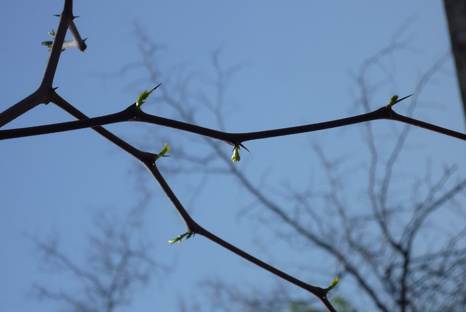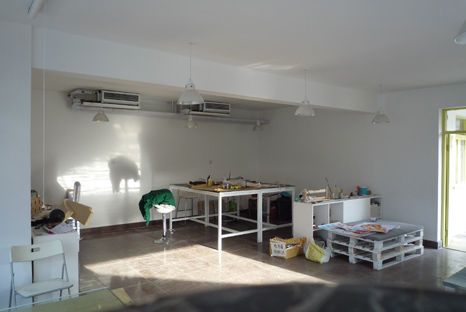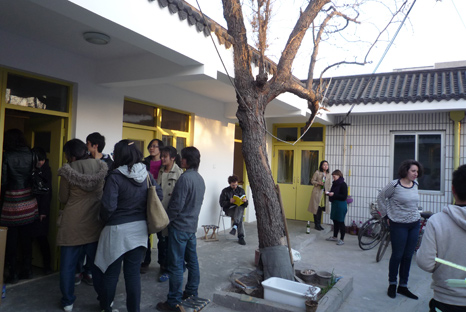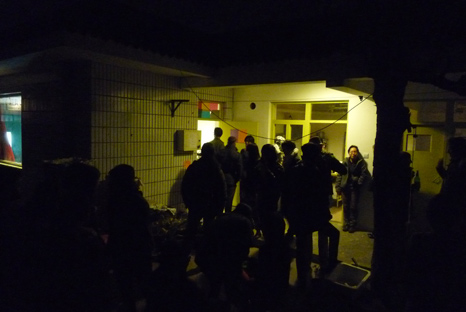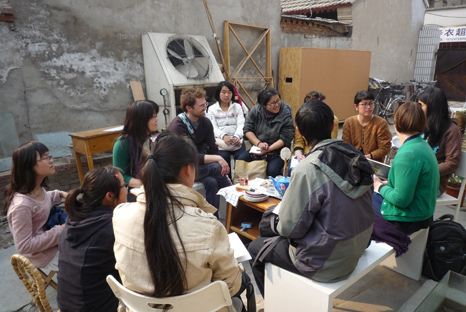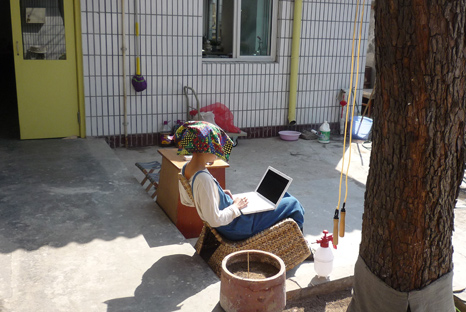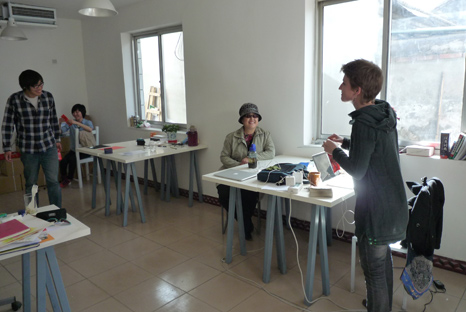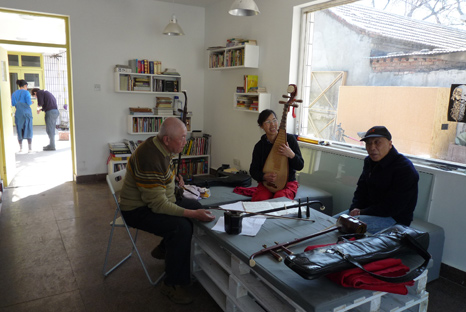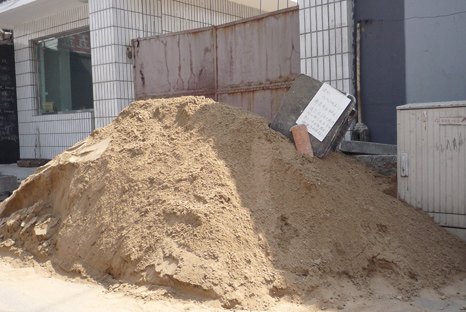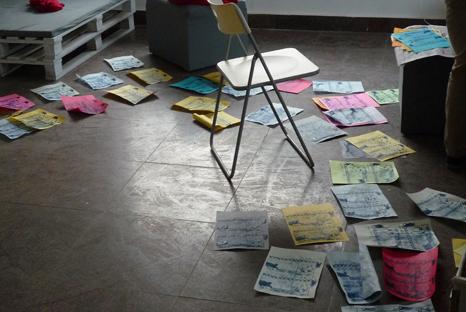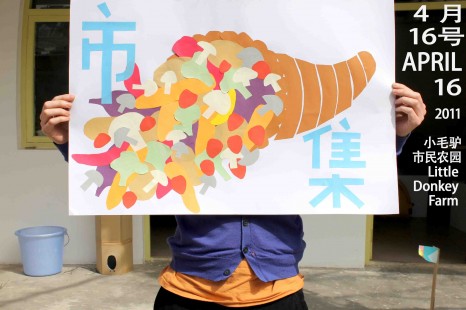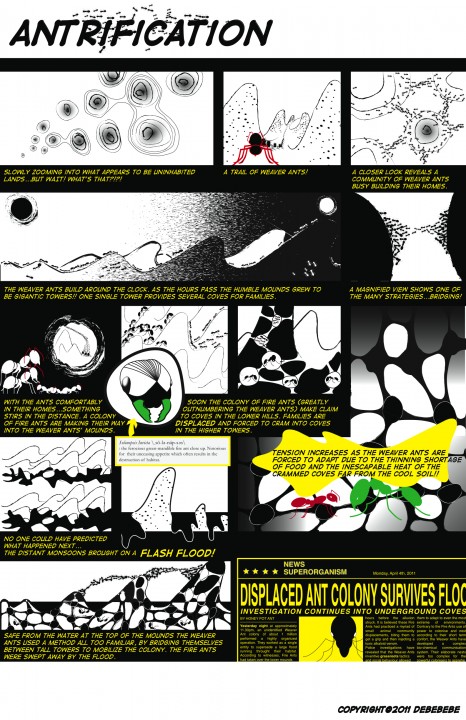The CD was composed of American commercial rap and r&b sped up and seamlessly mixed into one-hour mp3’s. He used this pulsing and unrelenting rhythm to fuel his wild progress, despite the near opacity of the lyrics to his ears. Young and tidy, with glistening hair and a craggy cheek surface formed of the new sustenance, he was an image of youth, an animation of the performance of youth under pressures. We climbed in and with the door’s closure, an easygoing promise of timely delivery and an immediate u-turn in front of an oncoming bus set a tone for a sequence of negotiations and split-second decisions informed by flowing intuition. This pointed awareness did not count the law chiefly as its limit, working along its approximate guidelines, but hovering in a parallel state where speed and safety are blurry, immeasurable energies constituting pure duration. Looking at the license on the dashboard, one noted an older, pale, balding man gazing back; the spirit and attitude of driving had either rejuvenated an adult, or made an adult of a boy. The maneuvers, which included burst-passing on the narrow 2-lane causeways that elegantly cross-hatch the edges of East Lake, cutting corners early shadowing mini-vans, and swerving around piles of debris, not to mention hurtling past other speeding cars on the new elevated freeways, all made up a language of an urban space that sprang up and lay half-destroyed and half-in-progress. As such, it was not the code of a single person, though he is the atomic driver in an incalculable system of circulation and friction; but he can only be the atom in tension with the particles exploding around him. Even the pedestrian on the rubble margin senses the shifting values and instant momentum transformations, adjusting to this general spatial intelligence with minimal violence; the other drivers play variations on each other’s motions, together developing the chaotic vocabulary that oscillates between efficiency and entropy, creating such tropes as the cautioning head-lamp flicker and the selfish congesting lane-take. Just like the tireless and carnal mp3 soundtrack accompanying the sequence to its end, these signifying gestures don’t accumulate toward a thesis, but in their isolation gradually chip away at time, leaving us dizzy and early, present, in front of the Hankou train station. There are no straight roads, and in Wuhan, the atomic driver must hustle space with the will of an unstable citizen.
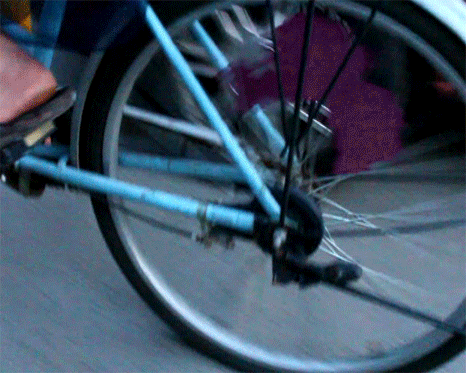
2011年5月18日至2011年6月5日
18 May – 5 June 2011
“大陆漂流.中国”活动将众多的艺术家,策展人,理论家,与活动家召集到一起,共同探索当 代地理政治转化对于公共框架与亲密生存 空间的影响。在一周的时间里,本活动将“漂”在北京,尝试将抽象分析(经济,社会学,都市生活研究,美学等等)直接导入不同的艺术实践当中。通过报告,工 作坊,讨论会与实地考察等方式,我们希望自己能在闹市与乡间的穿梭中构建一个充满欢乐,感觉试验,偶遇与思考的游历方式。
The Continental Drift China brings together artists, curators, theorists, and activists to explore the impacts that current geopolitical transformations are having on the public frameworks and intimate environments of existence. For one week, the roving seminar will drift through Beijing, endeavouring to bring abstract analysis (economics, sociology, urbanism, aesthetics, etc.) into direct contact with situated projects. By way of presentations, a workshop, discussion sessions and site visits, the project provides a movement through space thriving on conviviality, perceptual experimentation, unexpected encounters and informed travel in both metropolitan and rural settings.
活动安排 SCHEDULE
欲知所列每项活动的细节,请看本安排表下的具体内容。请注意不是所有的活动都在同一场所,活动地址安排如下:
For detailed descriptions of each of the events listed, please see below. Note that not all events are at the same location; addresses are listed accordingly.
【 合辑 Selections 】底特律音乐人类学赏析,王念华主讲 / an evening of musical anthropology led by Dan S. WANG
5月19日,周四,晚上7点开始
地点:家作坊,东城区交道口北二条8号
Thursday, 19 May, 19.00
location:HomeShop, Dongcheng District, Jiaodaokou Beiertiao 8
【 杨先让 YANG Xianrang 】(艺术家, 曾任中央美术学院民间美术系主任)讲座 / a Talk with Professor YANG Xianrang, artist and former head of the Central Academy of Fine Arts Folk Arts and Crafts department
5月21日,周六早上10点半开始
地点:家作坊,东城区交道口北二条8号
Saturday, 21 May, 10.30
location:HomeShop, Jiaodaokou Beiertiao 8
【西遊计划 Journey West 】艺术假扮旅行社简单开张 / A “Journey West” Travel Agency performative soft opening
5月21日,周六下午4点开始
地点:钟楼湾胡同41号
Saturday, 21 May, 16.00
location:41 Zhonglouwan Hutong (next door to The Drum and Bell Bar)
【《北二条小报》工作坊 Beiertiao Leaks self-publishing workshop】
5月22-23日,周六到周一,早上10点开始直到印刷完毕
地点:家作坊,东城区交道口北二条8号
Sunday & Monday, 22-23 May, 10.00 until the presses are hot
location:HomeShop, Jiaodaokou Beiertiao 8
从5月23日“大陆漂流”继续向武汉与重庆漂流,6月4日返回北京。如果你对我们下一步的旅行感兴趣,请e-mail垂询: lianxi[圈A]homeshop[点]org[点]cn。
From the 23rd of May until the 4th of June, the Drift continues on to Wuhan and Chongqing before rounding back up in Beijing. If you are interested to continue with us on this leg of the journey, please inquire: lianxi[at]homeshop[dot]org[dot]cn.
【 “大陆漂流.中国” 总结论坛 Continental Drift China Final Forum】“哪里哪里” 艺术空间将与大陆漂流参加者联合举办一个开放总结论坛。更多的详情稍候发布。 / The Where Where Exhibition Space in Caochangdi will host a final forum with China Drift participants open to the public. More details to be announced.
6月5日,周日,下午3点
地点:“哪里哪里” 艺术空间
朝阳区草场地村319-1艺术东区A区内
Sunday, 5 June, 15.00
location:Where Where Exhibition Space
No. 319-1, East End Art Zone A, Caochangdi
—–
本次大陆漂流活动由 “我们家” 青年自治中心,“家作坊”,“哪里哪里”策展联盟,与“罗盘”(美国中西部激进 文化走廊)等组织共同合作举办。
The Continental Drift China is developed by Desireè Youth Autonomy Center, HomeShop and the Where Where Curatorial Collective, in conjunction with Compass (of the Midwest Radical Culture Corridor).
豆瓣同城活动 Douban event page:www.douban.com/event/13954395/
更多关于“大陆漂流.中国”的参加者信息,继续读… For more information about participants of the Continental Drift China, please continue reading.
 时间 posted on: 15 May 2011 |
时间 posted on: 15 May 2011 |  发布者 author: 家作坊 HomeShop |
发布者 author: 家作坊 HomeShop |  评论 comments (5) |
评论 comments (5) | 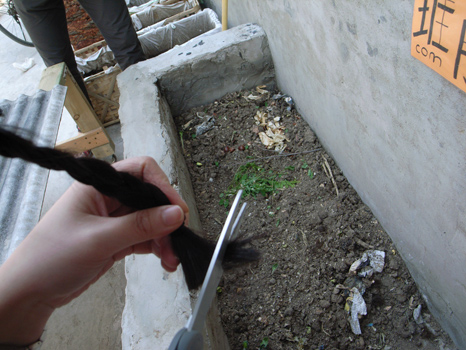
In light of the last Happy Friends Reading Club meeting’s topical foray into the “aesthetics of sustainability” (addressed in an essay of the same name by Hildegard Kurt, as introduced by Victor Margolin’s text in Beyond Green: Toward a Sustainable Art), the validity of pinpointing or negating the any-be-all-whatever of contemporary art still stands at insecure shoulder to the hierarchies established by the art system, the values garnered by its economics and institutions and indices of fame. M.E. pointed out an important question raised by Margolin, of a possible aesthetics of ethics to describe those ambiguous projects (in his example, Mel Chin’s Revival Field “in which the artist explored the use of plants to remediate the soil in a landfill that had been contaminated by heavy metals.”) which become artistically difficult to interpret.
And while perhaps we should have been examining the ethics of any artistic practice all this time, it’s perhaps also true that a sublime—art historically speaking—needs not adhere to any particular ethic (unless that is an ethic in and of itself), as it induces the viewer (until glorious afterlife or perhaps now merely through the clicks) to a mode not unlike Agamben’s bumblebee, in a captivated kind of productivity, guillotined and still sucking for all it’s worth. This is perhaps the pre-thought to what I mentioned in the last post, “towards a ‘new’ language starkly founded in realism, unimaginative”, where aesthetics are the attributes of wallpaper styles and design tools to address real world issues. Not unimaginative by any means, but I wonder at which point in such an assembly line can meaning be redistributed.

Margolin’s essay calls for “a new aesthetic to embrace the three categories of object, participation, and action without privileging the conventional formal characteristics of objects. In this aesthetic, the distinctions between art, design, and architecture will blur as critics discover new relations between the value of form and the value of use.” If we have come towards forms of art-making that ‘see’ us through these categories, it becomes inevitable that ethics comes to the fore, and the voice of the artist be taken much more seriously than “wildly expressionist”. This puts art and its blurriness in danger of always being held to scales of use value, but let’s hope that it is still possible to expand the realms of possibility via the languages that we use, the way the signs are laid to their signifiers, to understand modes of transmission as the aesthetics of our ethics.
In an upcoming exhibition entitled All that Fits: The Aesthetics of Journalism, curators Alfredo Cramerotti and Simon Sheikh bring art and journalism together as “two sides of a unique activity; the production and distribution of images and information.” This elevation of the importance of forms of transmission alongside the production of the object itself is crucial to contemporary thought. It is a call upon the collective, or maybe a confirmation that past forms of beautiful solitude are less relevant in our ways of production, parallel to the ethical consideration of the other as artistic criterion. The press release of the show goes on to state: “Whereas journalism provides a view on the world, as it ‘really’ is, art often presents a view on the view, as an act of reflection.” These are both response-based attitudes towards creation inseparable from their need for reader/audience reception (one could go into that other discussion on intention here), and in our case, perhaps a fitting media for engaging object, participation and action via a context-specific endeavour. It’s an emergent thought exactly without that specific intention that Q.Y.Z. is always disappointed about. But if it’s 涌现 yǒngxiàn, as H.J.Y. prefers to call it, it’s etymologically happening in large numbers, and maybe that’s something to think about. Big time, baby, big time.
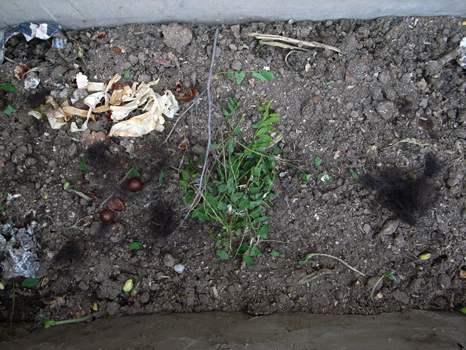 Images taken from a ritual for hair-tossed-to-compost, May 2011
Images taken from a ritual for hair-tossed-to-compost, May 2011
 时间 posted on: 15 May 2011 |
时间 posted on: 15 May 2011 |  发布者 author: e |
发布者 author: e |  评论 comments (2) |
评论 comments (2) | QU may ask, “What is your purpose in doing this?” And so if news can never be fully objective, there must be an agenda in there somewhere, or at least a tendency, an implication. “Gentrifier” could be one in this case, as per recent discussions at HomeShop, the Other’s guilt, or being accused of cultural colonialism. Production of any sort could then be nullified, re-organised, rendered meaningless…but to muster up the words—oh!—now wouldn’t that be amazing?
The press was seen as a tool, a transmission belt for public opinion, a marketplace of ideas. It was the platform for public discussion of issues of local as well as national importance. Hence the Chinese government “is well advised to consult public opinion” through newspapers. Pictorial evidence from November 1907 ironically underlines this point. A huge pot is filled with a burning substance labeled 舆论 yulun, “public opinion.” The characters on the lid read: “The power is with the court.” It is apparent, however, that the fire inside the pot will not easily be controlled. Public opinion seethes visibly in spit of attempts to “put a lid on it”: clouds of smoke and flames escape not just through the gap between the pot and the lid but also from a hole at the bottom. [p. 16]
Of course it seems ridiculous to say ‘subversion’, just as it is to render pure identity, forms like ‘global’ can never be slick surfaces but would rather seethe like pots.
“The past is being drafted (consciously or unconsciously) into the service of present needs and purposes.” —Paul Cohen
A cartoon that appeared in the 申报 Shenbao in October 1907 depicts the role of that alien medium, the newspaper: the caricature shows two buildings, an elaborate one labeled 宫庭 gongting, “the court,” and a much simpler one named 民间 minjian, “the people.” From the court, 秘密消息 mimixiaoxi, “the secret news,” is being transferred by telegraph to the people–but not directly. The node at which the telegraph line from the court and that leading to the people meet is labeled 外国 waiguo, “the West”. This image echoes a declaration made by the Shenbao in its first issue: “新闻纸之制疮自西人搏舆中土 The making of newspapers has been transmitted by Westerners to Chinese lands”. [p. 23-24]
Maybe that time of trying to ‘integrate’ can be laughed at now in retrospect, dynamics change here all the time and I’m just trying to keep up. Would it be possible to propagate from the perspective of distance (BJ to GZ), without being thrust into a commune-like resort of separatism? Words gather for the sake of themselves, sadly just another kind of branding, but what other pretext can there be for the gathering, words and identities on paper, another party?
Since the foreign Xinbao 新报 (= new bao) was a 报 bao just the same, it was bound to be seen as akin to the Jingbao 京报 (capital bao). Foreign-style newspapers were aware that their audience’s perception of the newspaper was conditioned by their familiarity with the jingbao. They were quick to exploit this expectation: among other things, they reprinted the court gazette, imitated its format and punctuation, and adopted a name (xinbao, literally new announcements) formed in analogy to that of the court gazette (jingbao, literally capital announcements). They evidently felt that this foreign medium needed some “Chinese” legitimation. Why, then, did they not pursue the potentially convincing argument that the newspaper was really just a continuation of a indigenous Chinese tradition? Since by the late Qing finding Chinese origins for Western knowledge to be introduced to China (西学中原 Xixue Zhongyuan) had become a well-established rhetorical practice, would this not have been a striking argument? [p. 25]
The principal difference, then, between foreign papers and their indigenous counterparts is the fact that the newspapers spread news by everyone from everywhere, whereas the Chinese papers report only official news. Naturally, the number of its readers was small and continued to dwindle. Moreover, the increasing centralization of politics, which peaked during the Qing and which was accompanied by a rigid system of secrecy laws (preventing the spread of all the “secret news” hinted at in Fig. I.2) confined the Jingbao to only the most commonplace court news and thus rather “boring” information. [p. 26]
Hurrah to boring news from everyone, all the time. Is it impossible to find a ‘new’ language starkly founded in realism, unimaginative?
… the Xinbao, the new(s)paper, was neither sold nor perceived as a foreign import. Instead, there was a strong tendency to domesticate it for Chinese use and Chinese understanding, for only thus—so it must have appeared to China’s newspaper makers—could it be an effective agent of change. [p. 31]
Indeed, however much the Shenbao may have profited from its foreign background, more often than not it had to defend itself against charges that it was a foreign medium or that it was pro-Western. this is the reason for its insistence that it relied on a Chinese readership and was thus written in Chinese by Chinese according to Chinese customs to be sold to Chinese. Like many other foreign-style papers, the Shenbao took pains to adapt to Chinese “idiom” (kouqi 口气). In the process, it created a “new” language with a “new” syntax that made the newspaper an acceptable and understandable means of communication. [p. 32]
Badiou, truth, new. Trajectory, 你的目的是什么?
All quotes above taken from A Newspaper for China?: Power, Identity, and Change in Shanghai’s News Media, 1872-1912.
 时间 posted on: 9 May 2011 |
时间 posted on: 9 May 2011 |  发布者 author: e |
发布者 author: e |  评论 comment (1) |
评论 comment (1) | 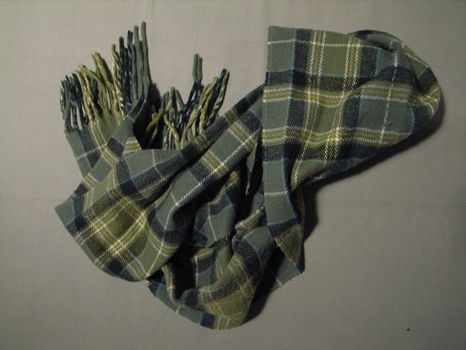
失物品 009:橄榄绿和黑彩格呢羊毛围巾
日期:2011年04月(具体时间不明确)
地点:家作坊(交道口北二条8号)
Lost & Found Object No. 009: olive & black plaid woolen scarf
Date & Time: some point in April 2011 (exact date & time unknown)
Location: HomeShop (Jiaodaokou Beiertiao Number 8)
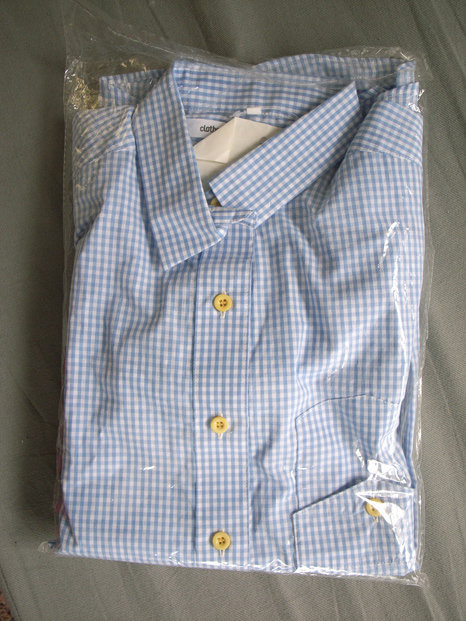
失物品010:新买的”clothes/shop 衣”的蓝白格子衬衫(39号,价格标:人民币680元)
日期:2011年04月(具体时间不明确)
地点:家作坊(交道口北二条8号)
Lost & Found Object No. 010: freshly purchased “clothes/shop 衣” brand blue & white checkered button-down shirt (size 39, listed price RMB 680 yuan)
Date & Time: some point in April 2011 (exact date & time unknown)
Location: HomeShop (Jiaodaokou Beiertiao Number 8)
—–
如果您要收回这些物品,请跟家作坊联系。Please contact HomeShop to reclaim these items.
 时间 posted on: 2 May 2011 |
时间 posted on: 2 May 2011 |  发布者 author: e |
发布者 author: e |  评论 comment (0) |
评论 comment (0) | 家作坊是我现在工作的地方。最近我们在出一份有趣的报纸“北二条小报”登载的都是周边发生的各种各样的事情,超级生活化。这是我喜欢的话题。有一天和何颖雅聊天,聊到了我的爸爸。记忆中有一份报纸也出现在他的18岁,而且他和朋友包揽了内容编辑、排版印刷、成本核算、出版销售等格格环节的工作。何非常感兴趣这段经历,所以请我去请我的爸爸写下了他18岁时那份报纸是如何出生的。
私人办报并没有那么的功利,我父亲的那份报纸完全是各种巧合促成的。他们甚至根本没有考虑过卖不出去会怎么样。我想“北二条小报”或许也是这样的吧,但这正是有趣的地方。不确定的选题、不确定的观众群、不确定的销售模式或许就是私人板报的魅力吧。也许吧……
— 高杏
“文革”办报记
我喜欢看报,长年以来订有“武汉晚报”,“作家文摘”,从报纸的字里行间洞悉了世界风云,社会变革,人生百态。看报已成为人生一大乐事。但“办报”之事在我一生中曾经历过一次,哪是在难忘的“文革”岁月中。
我是“老三届”学生(高中68届)。在1968年全国正处在文化大革命的深入,发展阶段,革命形势仍然是“一片大好”。但是我们经过两年来的文化革命,当年革命小将的革命意志有所消退,同学一起在学校打牌、聊天、整天无所事事,处于一种逍遥状态。在68年4月的一天,我有一邻居叫原原(高我一届),跟我说他家一批白纸,我到他家一看果然有5捆白纸,他说纸的单位叫定(每定约5000张),面积和现在的作家文摘版面一样大,他说想将每定纸20元卖掉。第二天我将原原想卖纸一事告诉了我同学周冀元,随后周冀元对我说我们把这批白纸买来办一期报纸吧。我说:我们是学生,手无寸铁,身无分文如何能办报纸,想要把油墨、铅字、纸性搅到一起变成报纸,谈何容易。他说报纸印刷不成问题(他哥哥是文革小报“五干里狂澜”主编,认识印刷厂的人),只要商量把这批纸买过来就行。过了两天我们两人一起找到原原把我们想办报的想法告诉了他,然后,用卖报的钱来还他的纸钱,原原当时没有多想就答应了(虽然文革年代,虽然都是中学生,但诚信是不容置疑的),这时办报的硬件都已完备,如何办报的事就紧锣密鼓进行了。首先我们进行了经济测算,纸张要100元,印刷费要130元,成本在250元左右,(根本没有考虑报纸卖不出怎么办),当时小报是两分钱一张,我们要印2万多张才行,目前纸张不成问题。接着就是对报纸进行总体设计,为了使报纸更有可看性,首先是刊名要醒目,我们几个同学讨论后认为“红旗”比较醒目,决定用“红旗”作我们的刊名,出版单位为,中学红联武汉20中红海燕战斗兵团。然后,我们几个同学在一起商量报纸的版面策划。经讨论确定一版为要闻版,并登一篇创刊词(由周冀元主笔),再加上“中央首长讲话”“北京来电”等等内容,第二版为全国各地文革动态,第三版为本报亮点,我们找了一些“二战期间”斯大林,苏联红场,希特勒等等一些历史趣闻。第四版主要是武汉市的文革动态,四个版面的内容确定后,我们就分头准备,并吸收其它小报的长处(文革时期各种小报很多)经过一星期的努力按计划完成了四个版的内容,在68年4月中旬的一天我们借了一辆三轮车,将纸张和四个版面的内容,拖往了两里路远的印刷厂,这辆车上就承载着我和同学们的寄托和希望。三天后我们如期到印刷厂进行了校对,又过两天印刷厂就通知我们报纸印好了,现在是木已成舟了。报纸印好后如果卖不出去对我们当年还是学生来说将是一个沉重的打击,不光是经济上的还有思想上的。所以对报纸的销售我们进行周密的策划。我们几个同学经讨论后一致认为应该在一个星期天的上午(天气晴好)在武汉市的江汉路进行销售(江汉路是武汉市的商业中心和文革信息的集散地,相当于北京西单地区,离我家也只有5分钟的路程),在4月下旬一个星期天,天气果然不错,我们几个同学拖着三轮车一早就到了印刷厂,办完了有关手续后就看见经过20天的努力,两万多张报纸静静的放在面前,一种成就感从心里油然而生,我们同学几个赶紧将报纸装车上午九时拖到了目的地江汉路。还飘着油墨香的报纸一到江汉路就引起了广大革命群众(文革语言)的关注,面对满满一车刚印好的报纸,大家围了过来一看又是一个新面孔,同时我们同学一起喊“20中红旗、20中红旗”。接着就不但有钱递过来,三轮车已被团团围往,我们接着喊请大家排队。几分钟后我们车前竟排起了上十米的长队,经过简单收钱发报的安排后,只见钱不断进来,报纸不断出去,中午12时估计已卖了几千份,我和同学轮留到蔡林记(武汉老字号热干面馆)吃了碗热干面,下午接着卖到5点钟,第一天就估计卖了1万份,剩余的报纸就拖到我家,在回家的路大家都兴高采烈,成功的感觉都写在了我们脸上。第二天,第三天我们又接着去卖报,销售就差多了,两天共卖了5干份,就在第三天卖报时两个带袖章的解放军来到三轮车前对我们进行查询,并要我们到武汉警备司令部去登记备案,我和同学商量后认为我们又不是经常办报的,这期报纸是我们办的第一期也可能是最后一期,不必登记备案。接着我们又卖了两天,估计这几天共卖了1万8千份左右成本是收回了还略有赢利,最后还剩4千份报纸就动员我妹妹及她们的小伙伴拿到街上卖,并承诺卖报钱,可适当买冰棍吃,经过上十天的努力报纸卖了2万多份,家里还剩1千份左右就没有卖了,遗憾的是我们辛辛苦苦办好报纸一张也没留下来。
经过一个月的努力,我们的办报经历总算完成,通过结算后我们不但还清了所有的欠款,还赢利100元左右。1968年的100元和今天的100元是不能同日而语的,对我们学生来说就是一笔大的收入,我班同学用这笔钱到武汉东湖风景区玩了一天,并吃了红烧桂鱼,余下的钱还买个篮球 和排球供班同学同共玩,到此,我们第一次办报按我们的理想顺利的完成了。
通过这次办报使用领悟到办任何事除要周密的思考,努力工作外,天时、地利、人和,也是成功的重要因素。高孟枚
2011年2月26日
 时间 posted on: 29 April 2011 |
时间 posted on: 29 April 2011 |  发布者 author: e |
发布者 author: e |  评论 comment (0) |
评论 comment (0) | The HomeShop farm continues to gain momentum! Some updates…
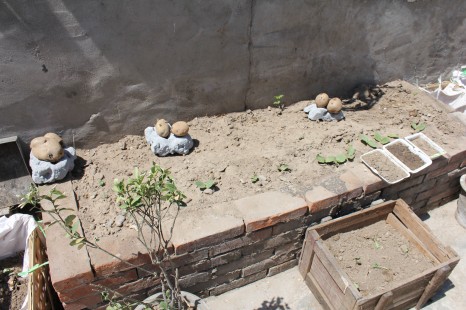
potato minimalism with neighbor seedbed (葫芦 hulu, 丝瓜 sigua, 南瓜 pumpkin), compost pumpkin seeds (in wood box, foreground) and stubborn tomato starter seeds in leftover takeout.
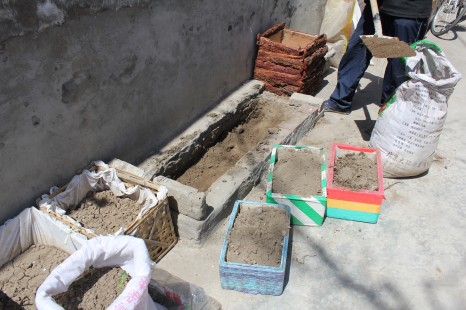
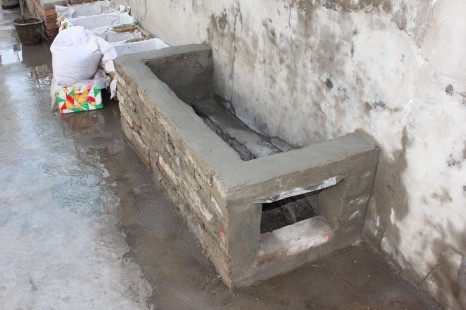
The permanent compost facility before (left) and after (right). (On far left you can see basket containers we picked up from fruit vendor, they were mango boxes.)
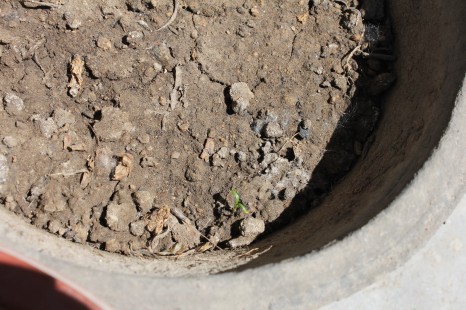
豆子 Beans. (type?) and maybe grass. Or 芝麻菜 arugula.
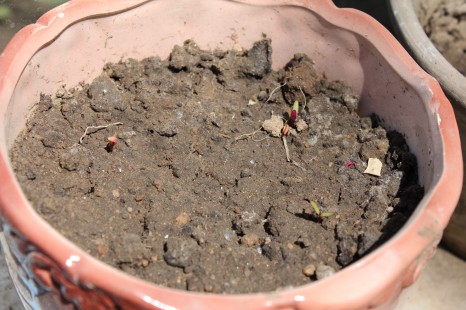
甜菜根 Red Beets
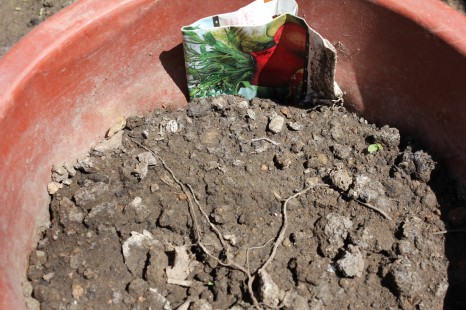
龙蒿 Tarragon
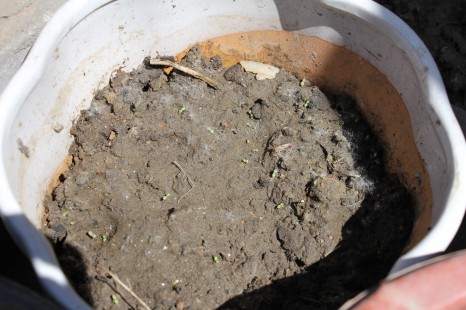
???
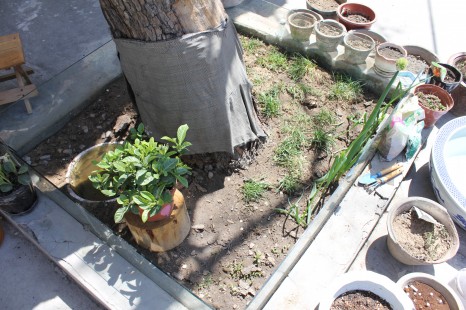
Turtle den with 大葱 onions, 葫芦巴 fenugreek and various seed pots.
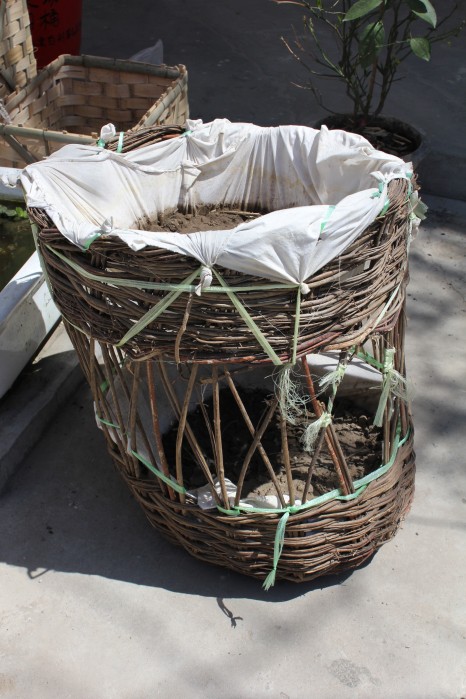
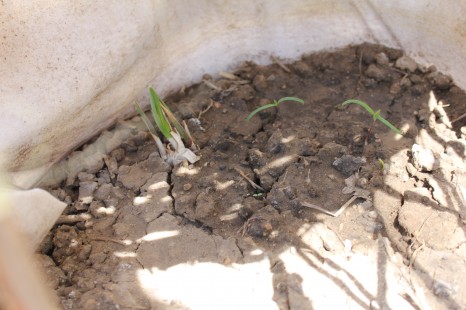
Double decker; 紫苏(大叶)shiso on top, 大蒜 garlic and 黄瓜 cucumber below.
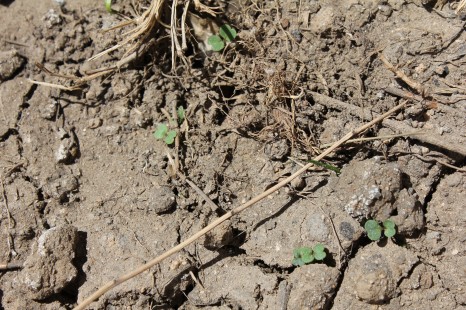
秋葵荚 Okra, we hope!
PLANTS
Today we did some re-organizing of the space and the full range of containers that are now almost fully planted (many already 2 weeks ago) with the following plant types:
草莓 strawberry plant (from LDF)
葫芦巴 fenugreek (from Indian friends)
南瓜 pumpkins (seeds started growing from compost)
葫芦 hulu gourds + 丝瓜 towel gourd + 南瓜 pumpkin (from neighbor)
大蒜 garlic (from leftover head)
大葱 onion (left in soil last year)
龙蒿 tarragon (commercial seeds from Canada)
香菜 cilantro (commercial seeds from China)
紫苏(大叶)shiso (commercial seeds from Japan)
黄豆 soybeans (from neighbor)
西红柿 tomato (commercial seeds from Japan, trying to sprout them, no sign yet)
秋葵荚 okra (commercial seeds from Japan)
土豆 potato (from leftover potatoes)
芝麻菜 rucola (commercial seeds from Canada)
甜菜根 red beets (commercial seeds from Canada)
芹菜 celery (commercial seeds from China)
薄荷 mint + 迷迭香 rosemary (cuttings from “Italian” farm in Beijing)
苦瓜 bitter melon (commercial seeds from China)
西葫芦 zucchini (commercial seeds from China)
菠菜 spinach (commercial seeds from China)
and probably some more…
SOIL
One batch from the riverbed near Little Donkey Farm; another from last year’s mobile garden; some lifted from a nearby park (with clumps of grass); some even resulting from the compost underway since last month or so.
COMPOST
The compost systems were also checked up on and updated.
The various types: EM plastic box starter w/o micro-organisms;
cardboard box blend;
styrofoam box blends;
clay pot blend;
worm compost, slow but still going.
They are all more or less converting to useable soil, we mixed this material with drier dirt from the park today, as some had moldy parts. It seems to be going well.
HARDWARE
Baskets from a fruit vendor, pots and containers from here and there. A large plastic container brought by a re:farm participant to hold “grey water.” Still needed: windshield wiper pumps, ladder.
ELECTRONICS
See more at re:farm. Coming soon…
 时间 posted on: 27 April 2011 |
时间 posted on: 27 April 2011 |  发布者 author: michael eddy |
发布者 author: michael eddy |  评论 comments (3) |
评论 comments (3) | 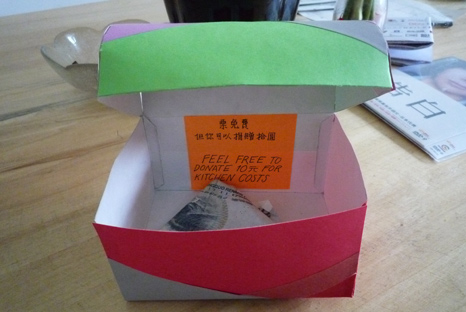
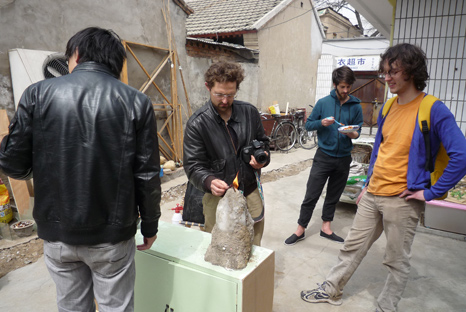 all photos by 曲一箴 Twist QU*
all photos by 曲一箴 Twist QU*
If we had not been able to come closer to an understanding of affect at the reading club meeting, it came to me again in a recent text by another Brian (“The half-life of disaster“), where somehow the descriptive traversing of scales felt familiar, and of course it can hit us with as much impact as watching a slow-motion montage of the year in review, or Olympic triumphs, or yes, the touching moments and heroes of disaster. We should be immune already perhaps, cynical viewers whose forms of belief have decayed parallel to these half-lives, and yet even at standstill, reduced to its barest linguistic denominators, it could still be possible to induce a notion of affective scales on a billboard covering an urban construction site: “Grandpa lazing in the sun. Boys dancing hip-hop. Businessman checking e-mail. Woman carrying shopping bag.” She was kind of pissed off about this, about all that it left out or pinned down too characteristically in succinct world view, but it seemed also something more than ‘trace’ in a collective reading on media. This is an affect of the kind that Michael mentions, “understood as the embodiment of certain codes, to be read and embodied by a particular community”. Such embodiment is a continuous training, like watching these disasters in constant cycle, like urbanity itself. We learn to traverse the levels, moving from horror and shock at grand scale to human warmth and its accompaniments in the everyday heroes and miniature miracles that soothe a constant, half-toned fear.
Taking distance can occur in both directions, towards macro-scale world views or into the safety of the small moments in a day to day. What Massumi claims as a ‘trace-form anticipation’ singularly and collectively describes this back and forth motion; it is a kind of subjective being-in-motion that typifies our here and now condition. To make a hero of our friend A W W abroad stresses the silence nearby, it casts scales of individual activism helplessly against nameless foreboding forces at the state realm, naïvely paralleled by his name being coded “Love the future”. Larger and stronger pursuits of activism in the last years (in education, in the art world, the Middle East, the mid-West…) echo, or are symptomatic of such “affective conversion circuits”, but there remains to be seen what “alter-” could possibly step out of it. Should affect move out of affect? What lies outside of scale itself? The movements seem to encompass everything already, like fantastic ideas kept to oneself, like capitalism’s neverending ever in sight, like half-lives in decay.
—–
* there was a thought at the beginning of writing this post that these photos bore some relation to the things i was going to say, but the distancing ended up there. there is a lot of ambivalent feeling in their transmission, but they speak of a relation…
 时间 posted on: 22 April 2011 |
时间 posted on: 22 April 2011 |  发布者 author: e |
发布者 author: e |  评论 comments (2) |
评论 comments (2) | 感谢大家一直以来对北京有机农夫市集的关注和支持。
下一次市集将和小毛驴市民农园合作,作为他们4月16 日开锄节的配套活动同时举行。届时将有20多家北京本地的农户、食品作坊、环保和三农NGO、艺术家和音乐家前来参加。您不但可以买到健康、有机、环保的农产品,还可以品尝到我们用有机食材制作的中西式美食、甜品和饮料(数量有限,欢迎您自带餐具)。同时,您还能在市集上了解与食品安全、环保、可持续生活相关的信息,让您吃得更放心,生活更低碳。市集志愿者的小厨房收入将会捐给日本和云南盈江地震灾区。欢迎您来市集了解更多我们在两地合作的NGO的工作。
开锄节的活动也非常丰富,详情请参考附件。
集市/Country Fair
北京有机农夫市集
时间:2011年4月16日星期六 上午10点至下午4点
地址:小毛驴市民农园
北京市海淀区苏家坨镇后沙涧村西
http://www.littledonkeyfarm.com/introduct/nav_8_21.aspx
网站:http://www.littledonkeyfarm.com/articleinfo/detail_5_9_264.aspx
邮箱:littledonkeyfarm@163.com,farmersmarketbj@gmail.com
如果大家有拼车需求,或者愿意提供拼车信息,请登录我们的微博和豆瓣页面,自行发布信息。
豆瓣活动:http://www.douban.com/event/13743609/
http://www.douban.com/event/13700536/
北京有机农场地图:http://pangbianr.com/farmmap.html
//////////////////////////////////////////
This month, Country Fair is being held during Little Donkey Farm’s Spring Planting Festival! We are inviting local farmers, artisans, environmental NGOs, and art and music collectives for another fantastic exchange event. Come for the market and stay for all of the activities – workshops, demonstrations, kids’ classes, and even a field day – at Little Donkey’s festival! Please join and share your experiences so that we can keep this event growing together. And remember to bring your own bowl and utensils to sample fresh, homemade organic treats. Part of the proceeds of the sale at the Country Fair will go to earthquake relief efforts in Japan and Yunnan Province. Please come to the Fair and learn more about the NGOs we are working with.
集市/Country Fair
Beijing Farmers Market
April 16th Sat, 2011 10:00 a.m.~16:00 p.m.
Address: Little Donkey Farm
West of Houshajian Village, Sujiatuo Zhen, Haidian District, Beijing
http://www.littledonkeyfarm.com/En/introduct/nav_14_29.aspx
Phone:010—62460405(Little Donkey Farm),134 0105 6422(CH)/ 136 9363 9394 (EN /JP)
网站:http://www.littledonkeyfarm.com/articleinfo/detail_5_9_264.aspx
邮箱:littledonkeyfarm@163.com,farmersmarketbj@gmail.com
If you plan to drive to the Country Fair and have extra seat in your car, you are most welcome to give other people a ride. Please go to our Weibo and Douban to publicize your information.
Weibo: http://t.sina.com.cn/1918547924
Douban: http://www.douban.com/event/13743609/
http://www.douban.com/event/13700536/
Beijing Farm Map: http://pangbianr.com/farmmap.html
———————————————————————–
芳嘉园 Fangjia Farm
圣林生态农庄 Sun Lin Farm
凤凰公社 Phoenix Commune
小毛驴市民农园 Little Donkey Farm
德润屋生态环境科技中心 De Run Wo
天福园有机农业 God’s Grace Garden
特奥愛心农庄 Special Commune
国仁绿色联盟 Ground Green Union
北京布乐奶酪坊 Le Fromager de Pekin
手土义坊 Shou Tu Yi Fang
谢睿慈 Lily HSIEH (厨余垃圾堆肥 EM compost)
瀚海沙 Han Hai Sha
全球和平妇女 Peace Women Across the Globe
緑色和平/ Green Peace
自然之友 Friends of Nature
达尔问自然求知社 Green Beagle
农业与贸易政策研究所 Institute for Agriculture and Trade Policy
集市厨房 Country Fair Kitchen
日历餐厅 Calendar Restaurant
小V Little V (素食餐厅)
旁边儿 Pangbianr
家作坊 HomeShop
and more
/// 联系方式 ///
北京有机农夫市集 Country Fair
电话:134 0105 6422(中文/English)/ 136 9363 9394 (日文/ English)
邮箱:farmersmarketbj@gmail.com
 时间 posted on: 15 April 2011 |
时间 posted on: 15 April 2011 |  发布者 author: michael eddy |
发布者 author: michael eddy |  评论 comment (1) |
评论 comment (1) | 
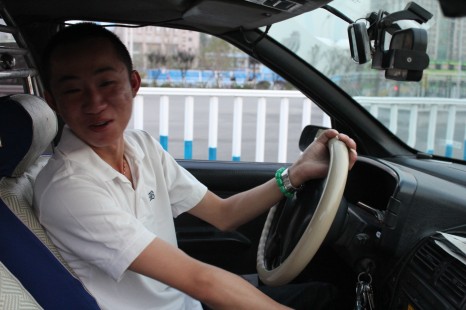
 分类 filed under:
分类 filed under: 